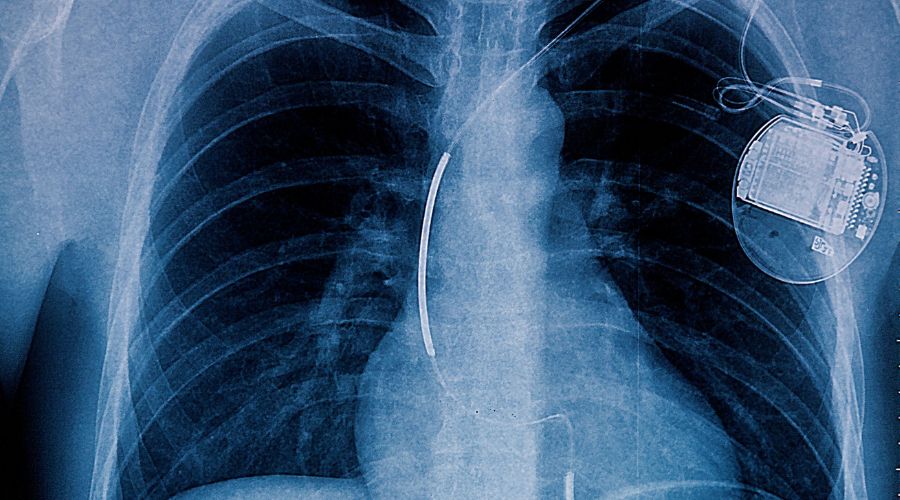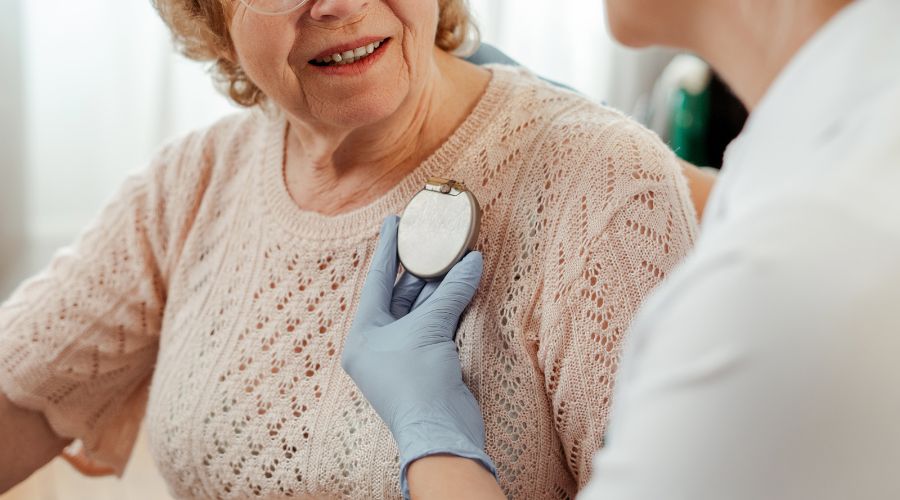Implantable Cardioverter-Defibrillator (ICD)
An implantable cardioverter-defibrillator, or ICD, is the tiny and implantable version of the life-saving device you often see in public areas – an automated external defibrillator, or AED.

An implantable cardioverter-defibrillator, or ICD, is the tiny and implantable version of the life-saving device you often see in public areas – an automated external defibrillator, or AED.
Patients suffering from significant cardiovascular issues may be at a greater risk of experiencing sudden cardiac death, an emergency where the heart stops beating without warning. If the patient is lucky enough to be near an automated external defibrillator, an immediate shock to the heart can revive them and bring their heart back to a normal rhythm. However, anything more than a few minutes before help arrives, the patient has a significant chance of death.
When we identify patients with a significant risk of sudden cardiac death, we often implant an ICD. This is a small device that is implanted under the skin of the chest with leads running to the heart. ICDs look and function similarly to pacemakers; however, instead of only pacing the heart, they detect when it has stopped and deliver a strong electrical shock to restart it. In short, these devices can be lifesavers for those who are at risk of experiencing a deadly arrhythmia at any given time.

The implantation of an ICD is relatively straightforward, and risks are generally low. The most significant risks of ICD implantation include infection, pain, and blood loss where the battery or pulse generator is implanted under the skin.
However, some patients will also experience a firing of the ICD when the heart is in normal rhythm. This false trigger delivers a strong shock to the heart and can be very disruptive to the patient. While this is rare, we tell our patients that it is possible. But the peace of mind knowing that there is a lifesaving device implanted in their heart to potentially avoid a sudden and deadly arrhythmia that cannot be treated in time is priceless.
Much like pacemakers, ICDs can last up to 10 years. This depends on how many times the pulse generator has had to fire and the manufacturing variance that affects device longevity. However, patients will be happy to know that replacing the ICD is relatively straightforward. The pulse generator’s battery is explanted, and a new battery is implanted in its place. Recovery from a battery replacement is similar to that of the initial implantation, and most patients are back to everyday life shortly after that. If you are suffering from irregular heartbeats, also known as arrhythmias, we encourage you to visit our office, where advanced testing can lead us to the cause and ultimately a suitable treatment plan. Feel free to contact our office by phone or using our contact form.
